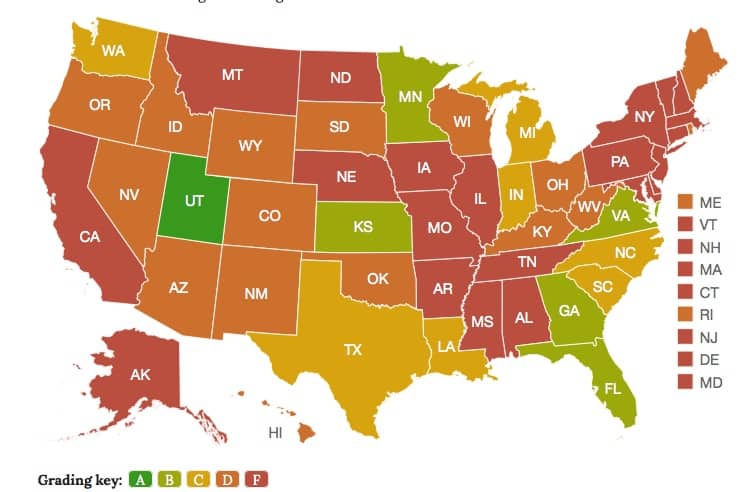20 Things States Should Do Now

It’s state policy that matters in U.S. education. Here’s 20 things that chiefs, state boards, governors, and legislatures should do now.
- Fund universal access to preschool and full day kindergarten.
- Embrace Core & More.Common Core State Standards are internationally benchmarked college ready expectations in reading, writing, and math. With online networks, they represent aplatform for innovation allowing teachers to share tools, resources and strategies across state lines.
- Like the 19 states that have joined thePartnership for 21st Century Skills or the districts in CCSSO Innovation Lab Network, states should encourage a broad view of career and civic readiness incorporating an innovation mindset.
- Support competency-based preparation of educators (see Preparing Teachers For Deeper Learning) and expand alternative preparation pathways especially those linked to high performing school districts/networks.
- Support an incubator like4.0 Schools to encourage and prepare edupreneurs and incubate new learning environments. (See 4 reasons every city needs an incubator.)
- Ensure that high school students receive informed guidance, academic support and access to youth/families services. (See Core & More.)
- Support new/transformed school grants modeled afterNext Generation Learning Challenges grants (see feature on CityBridge and NGLC in Washington D.C.). Grants could also be used to encourage schools to work in networks and use smart procurement to adoption of one of several EdTech clusters (SeeSmart Series Guide to EdTech Procurement. and Schools and Software from Christensen Institute).
- Support improved broadband access to schools and homes with public private partnerships.
- Provide matching grants to districts and networks with a good plan to boost student access to take home technology (laptops & tablets).
- Expand part time online course access: full and part time access to online and blended options from multiple providers (see Louisiana students gained online options, and 10 Strategies States & Districts Can Use to Boost AP).
- Encourage secondary schools to provide coding and computer science options and support adoption of nationally recognized information technology industry certifications. (Seeadvice from the experts.)
- Encourage competency-based student progressions by requiring students to show what they know and making end of course exams available on demand. (See DLN section on Advancement; for more see CompetencyWorks.)
- Enable data backpacks–a gradebook of data that follows a student from grade to grade and school to school. Encourage use of parent-managed comprehensive learner profiles. As recommended by the Department, parents should have the ability to download a learner profile and share it with multiple providers. Give every student a digital portfolio (see features on EduClipper and Pathbrite).
- Power equitable options with funding that weighted, flexible, and portable.
- Support short cycle trials of promising tools and strategies and Proposals for Better Growth Measures.
- Set a timeline for the digital conversion. State leaders should frame compelling goals and encourage proactive planning around a specific timeline (see Blended Learning Implementation Guide 2.0.).
- Adopt the 5 Game Changers from Complete College America: supported college preparatory curriculum in high schools, performance funding for higher education with 15 credits as the baseline for full time enrollment with access to structured schedules and guided pathways to success.
- Encourage dual enrollment in high school and keep community and technical college affordable for all.
- Improve ranking on competitiveness by streamlining business formation, cost of doing business, and compliance.
- Invest in infrastructure and transportation, expand equitable access to learning options.
Digital Learning Now & NGLC are Getting Smart Advocacy Partners.








Bruce Vandal
Thanks for including CCA in your "Top 20." However, our game changer on college readiness is to provide remedial education support to postsecondary students while they are enrolled in college-level gateway math and English courses, as a corequisite. The problem is that students who must complete non-credit, prerequisite remedial courses before entering college-level gateway courses rarely complete their remediation or the gateway course. Institutions that deliver the academic support while students are enrolled in college-level courses have gateway course success rates that are four to five times better than traditional remediation.
Lindsey Rust
Great list, though in my mind one major component missing- empower parents by increasing access to increased educational options.
Replies
Tom Vander Ark
Great addition, thanks